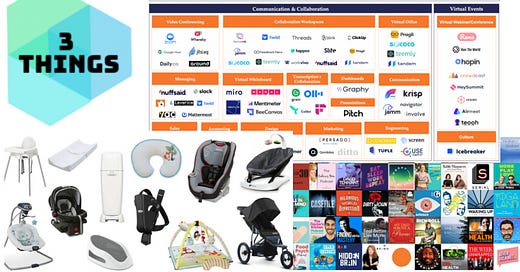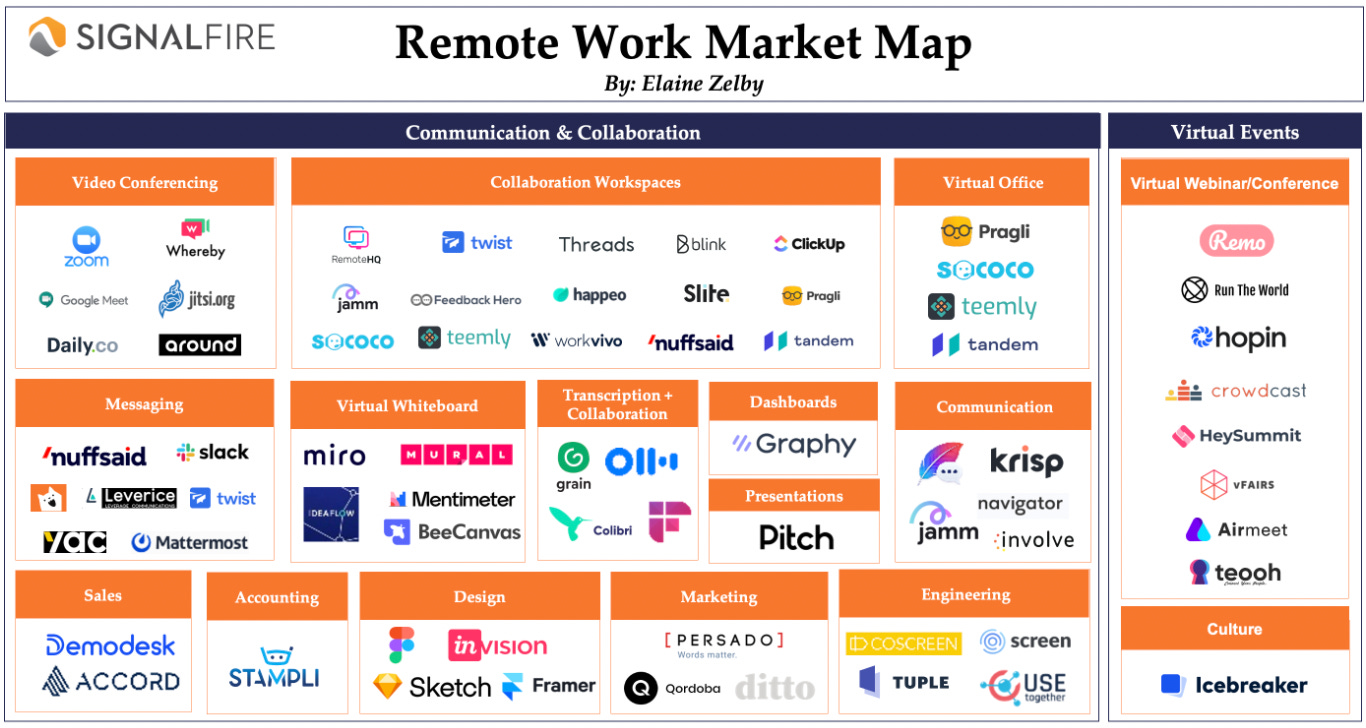Happy Sunday! Each edition of 3 Things will contain a dive into 3 rabbit holes I’ve found myself going down recently. Subscribe to get each week’s edition straight to your inbox and if you enjoy it, please share! This past week, I’ve been thinking a lot about:
IPDb
Used Baby Gear Marketplace
Spreadsheet —> Market Map
1. IPDb
Starting in 1980, Col Needham, a British software engineer and movie aficionado, started keeping a log of every movie that he had seen and adding short summaries and list of credits. On October 17, 1990 Needham published his list to Usenet, an early distributed discussion network that predated the widespread adoption of the World Wide Web. Others started contributing their own lists and adding as many actors, actresses, directors, etc that they could to create comprehensive cast lists. It was originally released as rec.arts.movies and in 1993 moved to the nascent web under the name Cardiff International Movie Database as it was sitting on the servers at the computer science department of Cardiff University in Wales. In 1996 it became the IMDb that we know today and 2 years later was acquired by Amazon.com for $55M where they intended to use the site to run ads to sell videotapes and DVDs. Today, there are over 7.5 million films in the database and around 10.5 million people’s profiles associated with those movies.
Just as the film industry blossomed and created celebrities across many genres that needed to be categorized, documented, and reviewed, the podcast ecosystem has been exploding with more than 1.9 million shows and 47 million episodes as of 2021. Many podcasts are now professionalizing with not only hosts but producers, editors, sound credits, ad credits and more. It’s time that someone created IPDb (International Podcast Database), a crowdsourced database of every podcast and episode (for episodic podcasts) out there. There should also be a Rotten Tomatoes style rating system so consumers can easily search and see what the masses think of shows. This social rating concept has been sorta tried with new podcast player apps but given the fragmented nature of listening apps and the dominance of Apple, Spotify, and Google, I think it needs to be a standalone website. Often, at the end of an episode, the host reads out the “credits” and now that the cost of transcription is nearly zero you could generate an algorithm that scrapes the transcripts for the credits and adds them to the entries. Given the very serious interest that behemoths like Spotify, Google, Amazon, and Apple are taking in podcasts, I’d imagine one of them would buy this pretty quickly.
2. Used Baby Gear Marketplace
As more friends of mine have kids, the more I realize how expensive all things baby really are. When you start looking at all of the fancy new brands like Happiest Baby, UPPAbaby, Bumbleride, Joolz, and more, large items like strollers and carseats cost in the upper hundreds if not thousands of dollars. The list of items that new parents (think they) need gets to be quite the laundry list and adds up in price, especially if you are buying everything new. The majority of things on the checklist are not clothing or consumables like diapers which lend themselves well to purchasing well cared for, used items. Anecdotally, I’ve had many friends who had their first kids in the past year or two buy everything brand new and both wish they would have purchased used and are now looking to sell some of their expensive gear that they no longer need but don’t know where or how to sell it.
While you can find some used baby gear on marketplaces like eBay, Craigslist, or in random Facebook groups, there is no place online that focuses on being a peer-to-peer marketplace for these items. A company could act very much like Carvana or Shift in the used car space; as the aggregator, matchmaker for local transactions, and authenticity/quality control. One difference is that they wouldn’t need to deal with the actual logistics and delivery pieces which are the most cost and labor intensive. Computer vision algorithms today are good enough to verify things like whether the brand, make, and model matches the listing as well as looking for any signs of damage or wear. Start with cities where the population density and age demographics align most with new parents in upper socio-economic buckets to get enough supply and demand on the marketplace. To build up liquidity and credibility, you could partner with all of the sites that expecting couples and new parents read like The Bump and What to Expect as affiliates to send traffic and reduce CAC.
3. Spreadsheet —> Market Map
If you work as a business analyst, in venture capital, private equity, investment banking or many other industries, it’s highly likely that you’ve put together a market map or landscape at some point. In May 2010, Terence Kawaja, CEO at the investment bank LUMA Partners was putting together a presentation on the consolidation in ad tech at the Interactive Advertising Bureau’s Networks and Exchanges Conference and had been experimenting with a way to organize players in the ad industry. He added logos grouped by what part of the industry they focused on and the audience immediately got it and the visual display caught on like wildfire. While this had been done before as an internal exercise for bankers, it was the first time it was used for marketing purposes and the LUMAscape quickly became a way for all types of companies to organize and map out complex industries.
The problem with creating a LUMAscape for a specific market is that it takes many, MANY hours to create the visual display even after you’ve done all of your research and have already organized the companies in some form of a spreadsheet. When I was putting together my market map on the remote work ecosystem last summer, I spent weeks organizing and categorizing over 200 companies in an Airtable and was then faced with the daunting task of getting all of the correct (and hopefully high quality) logos and formatting them into a LUMAscape. I ended up leveraging an offshore agency who helps with manual tasks like this but even with that, I still had to spend about 10 hours making tweaks. Plus, once it’s put together, good luck adding new logos or even worse, new categories! There needs to be a product that can convert a Google Sheet or Airtable into a visual market map, similar to what Glide does for Google Sheet —> mobile app. The tool could use the company URL to grab the logo, remove backgrounds, standardize sizing, and put them into a beautifully formatted map. Updates would be a breeze as even a simple CSS and Javascript based webapp could automatically make updates to the formatting and immediately publish.
That’s all for today! If you have thoughts, comments, or want to get in touch, find me on Twitter at @ezelby and if you enjoyed this, please subscribe and share with a friend or two!
~ Elaine






What are your thoughts on Podchaser, they've pitched themselves as the IMDB of podcasts (I like your IPDB :). On the community aspect, we've been starting to focus Clever on bringing in more community contributions for the episode tagging/highlights surfacing.
Wow, bang on -- feels like there are probably lots of utilities from other more established media (movies, music, etc) that could/should inevitably be applied to podcasts. Great call.
Awesome insights as always! Keep up the great work.